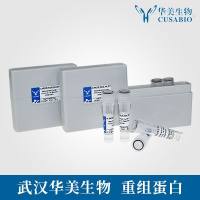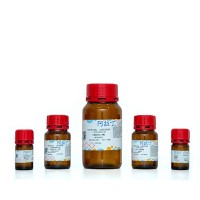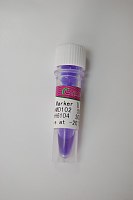Vector systems for cloning different sizes of DNA fragments
互联网
Vector systems for cloning different sizes of DNA fragments
Cell-based DNA cloning has been used widely as a tool for producing quantities of pure DNA for physical characterization and functional studies of individual genes, gene clusters or other DNA sequences of interest. However, the size of different DNA sequences of interest can vary enormously (e.g. human gene sizes are known to vary between 0.1 kb and 2.5 Mb). The first cell-based cloning systems to be developed could clone only rather small DNA fragments. Recently, however, there have been rapid developments in cloning systems that permit cloning of very large DNA fragments.
4.3.1. Plasmid vectors provide a simple way of cloning small DNA fragments in bacterial (and simple eukaryotic) cellsIn order to adapt natural plasmid molecules as cloning vectors, several modifications are normally made:
-
-
Insertion of a multiple cloning site polylinker. This is a short (~30 bp) synthetic sequence which contains unique restriction sites for a variety of common restriction nucleases (pre-existing restriction sites for these enzymes will be deleted from the plasmid if necessary to ensure the presence of unique cloning sites).
- Insertion of an antibiotic resistance gene. The host cells that are used must naturally be sensitive to the antibiotic in question so that any vector molecule which transforms a host cell can confer antibiotic resistance. By plating transformed cells on a medium containing the antibiotic, only those cells that have been transformed by vector molecules survive.
- Section 4.2.5 ).
The plasmid vector pUC19 contains a polylinker with unique cloning sites for multiple restriction nucleases and an ampicillin resistance gene to permit identification of transformed cells (Figure 4.10 ). In addition, selection for recombinants is achieved by insertional inactivation of a component of the b-galactosidase gene, a complementary portion of this gene being provided by using a specially modified E. coli host cell. ![]()
Section 4.2.2 ). Such cohesive properties are recognized in the name given to this sequence - the cos sequence. Once inside the bacterial cell, the cos sequences base-pair, and sealing of nicks by cellular ligases results in the formation of a double-stranded circular DNA. Thereafter the l DNA can enter one of two alternative pathways (Figure 4.11 ):
- The lytic cycle . The l DNA replicates, initially bidirectionally, and subsequently by a rolling circle model which generates linear multimers of the unit length. Coat proteins are synthesized and the l multimers are snipped at the cos sites to generate unit lengths of l genome which are packaged within the protein coats. Some of the l gene products lyse the host cell, allowing the virions to escape and infect new cells.
- The lysogenic state . The l genome possesses a gene att which has a homolog in the E. coli chromosome. Apposition of the two att genes can result in recombination between the l and E. coli genomes and subsequent integration of the l DNA within the E. coli chromosome. In this state, the l DNA is described as a provirus and the host cell as a lysogen because, although the l DNA can remain stably integrated for long periods, it has the capacity for excision from the host chromosome and entry into the lytic cycle (Figure 4.11 ). Genes required for lysogenic function are located in a central segment of the l genome (Figure 4.12 ).
The decision to enter the lytic cycle or the lysogenic state is controlled by two regulatory genes, c I and cro . These two genes are mutually antagonistic: in the lytic state the cro protein dominates, leading to repression of c I, whereas in the lysogenic state the c I repressor dominates and suppresses transcription of other l genes including cro . In normally growing host cells, the lysogenic state is favored and the l genome replicates along with the host chromosomal DNA. Damage to host cells favors a transition to the lytic cycle, enabling the virus to escape the damaged cell and infect new cells.
In order to design suitable cloning vectors based on l, it was necessary to design a system whereby foreign DNA could be attached to the l replicon in vitro and for the resultant recombinant DNA to be able to transform E. coli cells at high efficiency. The latter requirement was achieved by developing an in vitro packaging system which mimicked the way in which wild-type l DNA is packaged in a protein coat, resulting in high infection efficiency (Figure 4.13 ).
Several major types of cloning vector that have been developed by modifying phage l, or utilizing the size selection imposed by cos sequences, are described in the following sections.
Replacement l vectors
![]()
![]()
Figure 4.14 ). ![]()
Figure 7.7 ), there was a need for the development of new cloning vectors that could accept large DNA inserts. A number of such vectors have been developed recently (see Table 4.2 ) and have found immediate uses in general physical mapping of genomes and in permitting the characterization and expression of large genes or gene complexes. Examples of such vectors are discussed below.
Bacterial artificial chromosome (BAC) vectorsMany vectors which are popularly used for DNA cloning in bacterial cells contain high to medium copy number replicons. The advantage of vectors which contain such replicons is the high yield of DNA they afford: each cell in which a vector molecule is propagated will have several to multiple copies of the vector molecule, depending on the replication efficiency of its replicon. However, an important disadvantage is that such vectors often show structural instability of inserts, resulting in deletion or rearrangement of portions of the cloned DNA. Such instability is particularly common in the case of DNA inserts of eukaryotic origin where repetitive sequences occur frequently and, as a result, it is difficult to clone and maintain intact large DNA in bacterial cells.
bacterial artificial chromosomes (BACs ) contain a low copy number replicon, only very low yields of recombinant DNA can be recovered from the host cells ( Shizuya et al ., 1992 ). ![]()
Sternberg, 1992 ) (see Figure 4.15 ).
An improvement on the size range of inserts accepted by the basic P1 cloning system has been the use of bacteriophage T4 in vitro packaging systems with P1 vectors which enables the recovery of inserts up to 122 kb in size. More recently, features of the P1 and F-factor systems have been combined to produce P1-derived artificial chromosome (PAC) cloning systems ( Iouannou et al., 1994 ). ![]()
yeast artificial chromosomes (YACs see; Burke et al., 1987; Schlessinger, 1990 ). Cloning in yeast cells offers, in principle, some advantages over cloning in bacterial cells. Certain eukaryotic sequences, notably those with repeated sequence organizations, are difficult, or impossible, to propagate in bacterial cells which do not have such types of DNA organization, but would be anticipated to be tolerated in yeast cells which are eukaryotic cells. However, the main advantage offered by YACs has been the ability to clone very large DNA fragments. Such a development proceeded from the realization that the great bulk of the DNA in a chromosome is not required for normal chromosome function. As detailed in Sections 2.3.2  2.3.4 , the essential functional components of chromosomes are:
2.3.4 , the essential functional components of chromosomes are:
Centromeres , required for disjunction of sister chromatids in mitosis and of homologous chromosomes at the first meiotic division.
Telomeres , required for complete replication of linear molecules and for protection of the ends of the chromosome from nuclease attack.
Autonomous replicating sequence (ARS ) elements, required for autonomous replication of the chromosomal DNA. They are thought to act as specific replication origins.
In each case, the DNA segment necessary for functional activity in vivo in yeast is limited to at most a few hundred base pairs of DNA (Figure 2.8 ). As a result, it became possible to envisage a novel cloning system based on the use of chromosomal replicons (ARS elements) as an alternative to the ubiquitous use of cloning vectors based on extrachromosomal replicons (those found in plasmids and bacteriophages).
To make a YAC, it is simply necessary to combine four short sequences that can function in yeast cells: two telomeres, one centromere and one ARS element, together with a suitably sized foreign DNA fragment to give a linear DNA molecule in which the telomere sequences are correctly positioned at the termini (Figure 4.16 ). The resulting construct cannot be transfected directly into yeast cells. Instead, yeast cells have to be treated in such a way as to remove the external cell walls. The resulting yeast spheroplasts can accept exogenous fragments but are osmotically unstable and need to be embedded in agar. The overall transformation efficiency is very low and the yield of cloned DNA is low (about one copy per cell). Nevertheless, the capacity to clone large exogenous DNA fragments (up to 2 Mb) has made YACs a vital tool in physical mapping (see Section 10.3 ).







